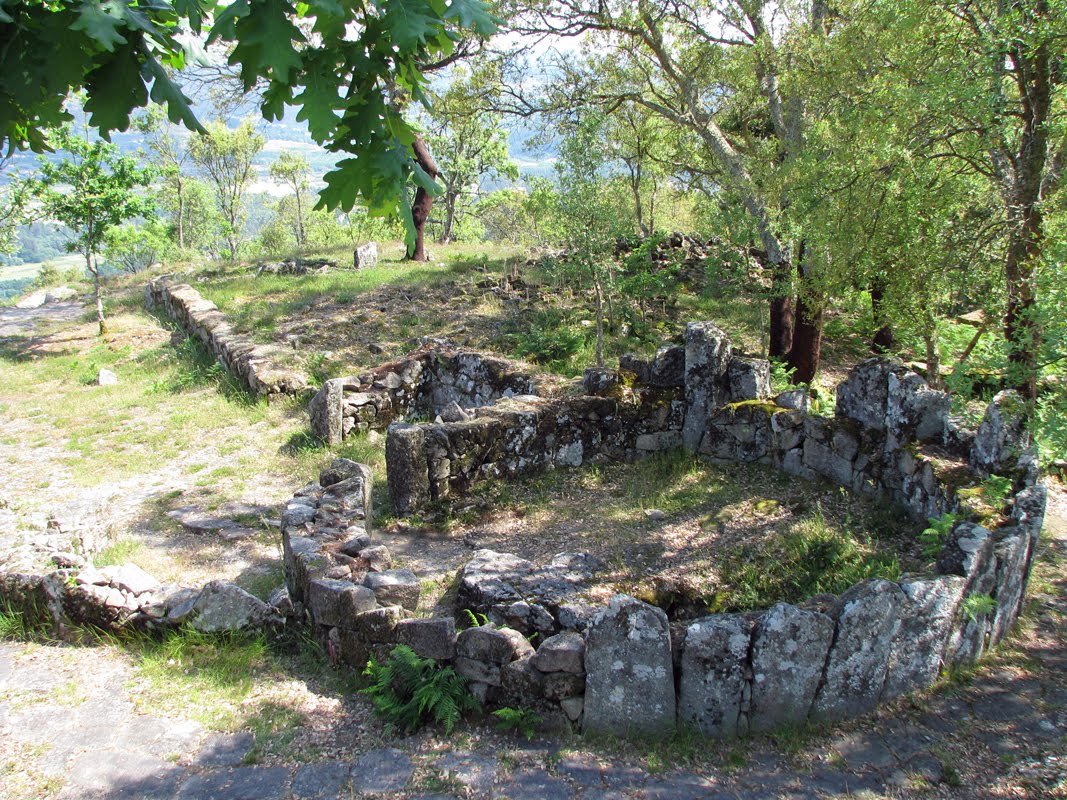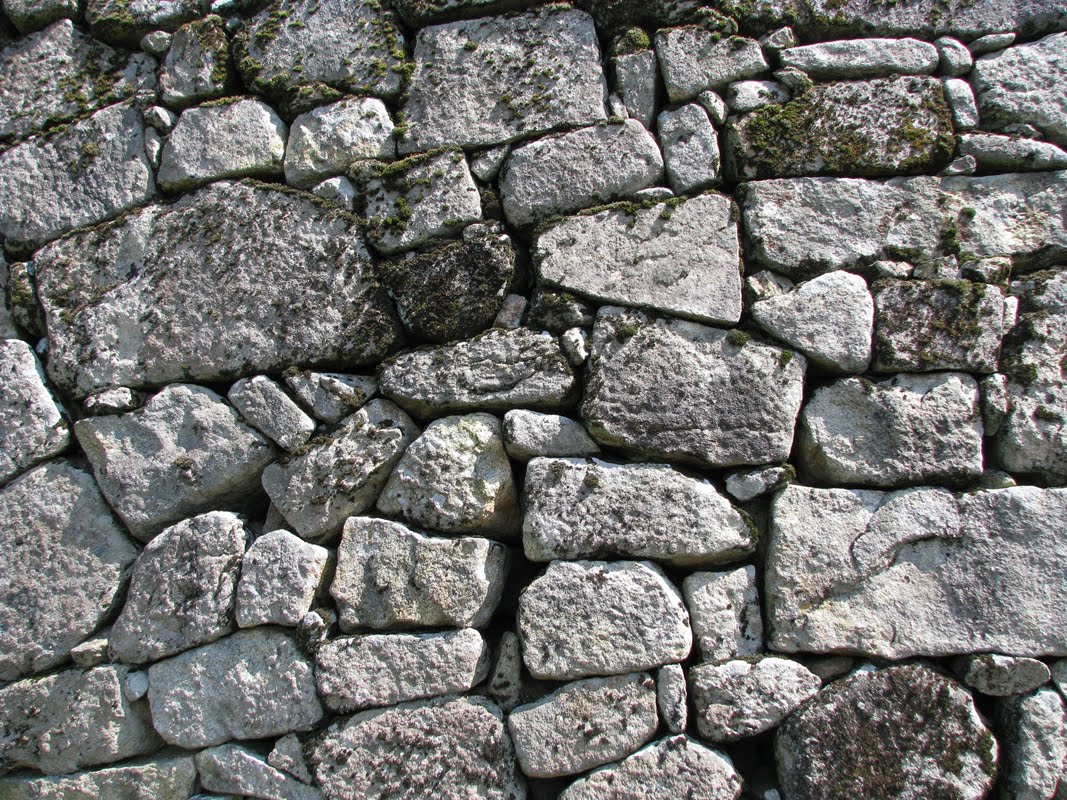Day 89. Citania de Briteiros
День 89. Ситания де Бритейруш
Кельтское поселение железного века, которое отчаянно сопротивлялось романизации вплоть до V века н.э. Считается, что своего высшего развития оно достигло во II-I вв. до н.э.
Кельтское поселение железного века, которое отчаянно сопротивлялось романизации вплоть до V века н.э. Считается, что своего высшего развития оно достигло во II-I вв. до н.э.
Herodotus describes the Celts as the last but one of the westernmost peoples inhabiting Europe, the Cynetes, also called the Conii in Strabo. He is very precise in locating them (© "The Celts in Portugal" Teresa Júdice Gamito, University of Algarve):
...now the Celtae dwell beyond the pillars of Hercules, being neighbours of the Cynesii, who are the westernmost of all nations inhabiting Europe (Herodotus, II, 33).
In another reference he locates the Celts again in the extreme west, as neighbors of the Cynetes, extending as far east as the Scythians:
...for the Ister [Danube] traverses the whole of Europe, rising among the Celts, who, save only the Cynetes, are the most westerly dwellers in Europe, and flowing thus clean across Europe it issues forth along the borders of Scythia (Herodotus, IV, 49).
Plato also states that the Columns of Hercules were located at the limits of the western world (Plato, Phaedon, 109b).
Геродот писал: «Ведь река Истр начинается в стране кельтов у города Пирены и течёт, пересекая Европу посредине. Кельты же обитают за Геракловыми Столпами по соседству с кинетами, живущими на самом крайнем западе Европы»
...now the Celtae dwell beyond the pillars of Hercules, being neighbours of the Cynesii, who are the westernmost of all nations inhabiting Europe (Herodotus, II, 33).
In another reference he locates the Celts again in the extreme west, as neighbors of the Cynetes, extending as far east as the Scythians:
...for the Ister [Danube] traverses the whole of Europe, rising among the Celts, who, save only the Cynetes, are the most westerly dwellers in Europe, and flowing thus clean across Europe it issues forth along the borders of Scythia (Herodotus, IV, 49).
Plato also states that the Columns of Hercules were located at the limits of the western world (Plato, Phaedon, 109b).
Геродот писал: «Ведь река Истр начинается в стране кельтов у города Пирены и течёт, пересекая Европу посредине. Кельты же обитают за Геракловыми Столпами по соседству с кинетами, живущими на самом крайнем западе Европы»
Roman author Avienus provides some details, such as the fact that the Celts drove out the previous inhabitants of the region and names two Celtic tribes, the Cempsi and the Sefes, who lived in the westernmost areas of the Iberian Peninsula, apparently in the same area as the Celts described by Herodotus:
The Cempsi and the Sefes dwell in steep mountains
In the lands of Ophiussa; close to them are located
The light-footed Liguri and the Draganes,
Furthest toward the snowy North.
There is also the island of Poetanion near the Sefes
And the large harbour; adjoining the Cempsi
Dwell the Cynetes. (Immediately) at the Cynetian ridge,
Where the sidereal light changes (fades),
Stands proud by the end of Europe
Facing the salty waters of the Ocean, full of monsters
(Avienus, Ora Maritima, 195-204)
The Cempsi and the Sefes dwell in steep mountains
In the lands of Ophiussa; close to them are located
The light-footed Liguri and the Draganes,
Furthest toward the snowy North.
There is also the island of Poetanion near the Sefes
And the large harbour; adjoining the Cempsi
Dwell the Cynetes. (Immediately) at the Cynetian ridge,
Where the sidereal light changes (fades),
Stands proud by the end of Europe
Facing the salty waters of the Ocean, full of monsters
(Avienus, Ora Maritima, 195-204)
Both rivers flow from the eastern regions; but the Tagus, which is a much longer stream than the other, flows straight westwards to its mouth, whereas the Anas (Guadiana) turns south, and marks off the boundary of the inter-fluvial region, which is inhabited for the most part by Celtic peoples, and by certain of the Lusitanians who were transplanted thither by the Romans from the other side of the Tagus (Strabo, III, 1, 6).
Ephorus, in his account, makes Celtica so excessive in its size that he assigns to the regions of Celtica most of the regions, as far as Gades, of what we now call Iberia; further, he declares that the people are fond of the Greeks, and specifies many things about them that do not fit the facts of today (Strabo, IV, 4, 6).
Ephorus, in his account, makes Celtica so excessive in its size that he assigns to the regions of Celtica most of the regions, as far as Gades, of what we now call Iberia; further, he declares that the people are fond of the Greeks, and specifies many things about them that do not fit the facts of today (Strabo, IV, 4, 6).
Some other precise but fragmentary references from earlier times, probably dating to 600 BC, are also available. The following account of Pseudo-Scymnos (164) gives us an interesting detail: The renowned Tartessos, famous town, receives tin carried by the river from Celtica, as well as gold and bronze in great quantity (Peudo-Scymnos 164, cited in Schulten and Bosch Gimpera 1922).
Pliny also mentions the Celtici in southwest Iberia and their location coincides with that of all the authors quoted above:
The region stretching from the Baetis (Guadalquivir) to the river Anas (Guadiana) beyond the places already mentioned is called Baeturia, and is divided into two parts and the same number of races, the Celtici bordering on Lusitania, of the jurisdiction of Hispalis, and the Turdili, who dwell on the borders of Lusitania and the Terragonian territory, but are under the jurisdiction of Corduba (Pliny, Natural History, III, I, 13).
The region stretching from the Baetis (Guadalquivir) to the river Anas (Guadiana) beyond the places already mentioned is called Baeturia, and is divided into two parts and the same number of races, the Celtici bordering on Lusitania, of the jurisdiction of Hispalis, and the Turdili, who dwell on the borders of Lusitania and the Terragonian territory, but are under the jurisdiction of Corduba (Pliny, Natural History, III, I, 13).







Comments
Post a Comment